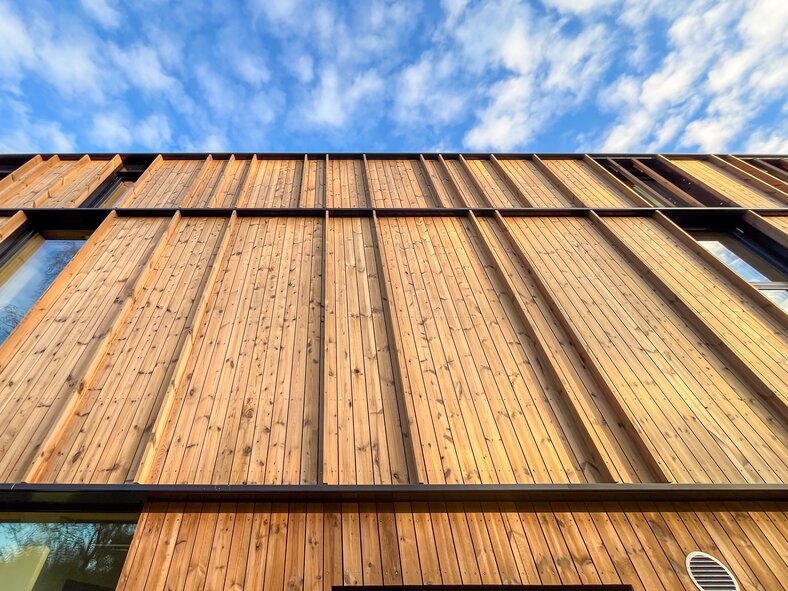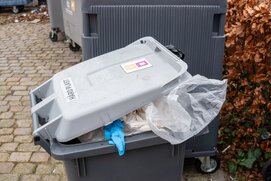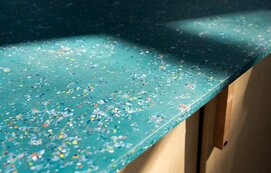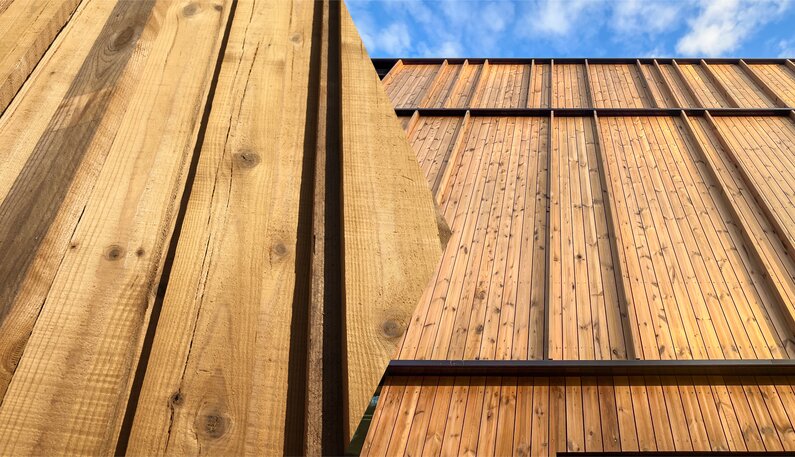Bronsø
Thermo wood facade cladding
Bronsø
Thermo wood facade cladding
Bronsø is a thermally treated wooden facade cladding. It is upcycled discarded material from a regular production of wooden goods and has 39% CO₂e reduction versus similar products. We have a range of different profile combinations to choose from.
Bronsø is a thermally treated wooden facade cladding. It is upcycled discarded material from a regular production of wooden goods and has 39% CO₂e reduction versus similar products. We have a range of different profile combinations to choose from.
Combination type: 1
Your environmental impact:
Product | Thermally treated wood facade cladding |
Wood | Discarded pine from regular production |
Treatment | Thermo treated |
Widths | 4”, 5” & 6” mixed |
Lengths | 1,8-5,4 m, (always delivered in various lengths) |
Thickness | 18 mm |
Installation | Front facing screws |
Fire class | With fire retardant: B-s1, d0 Without fire retardant: D-s2, d0 |
Durability | Class 2 |
Density | 390-430 kg/m3 at 5% humidity |
Delivery | 4 weeks without additional adjustments |
Made in | Denmark |



"I am made from discarded wood turned into facade cladding"

Bronsø delivered at scale
Valhøj Skole / Copenhagen, Denmark
C. F Møller's Have / Copenhagen, Denmark
Høje Taastrup City Hall / Høje Taastrup, Denmark